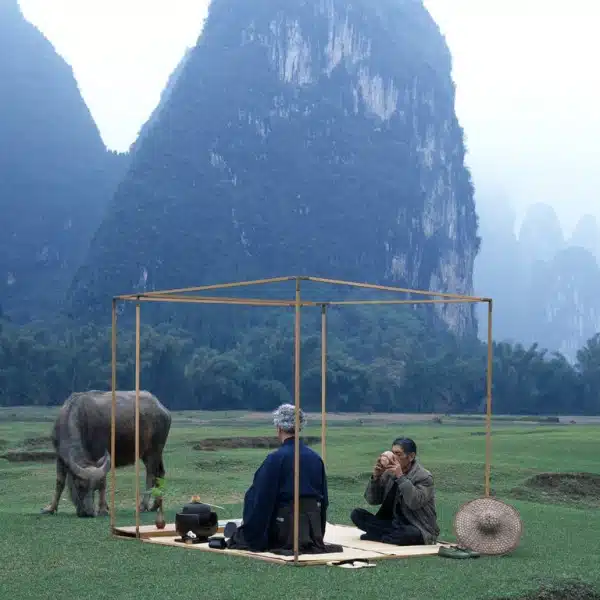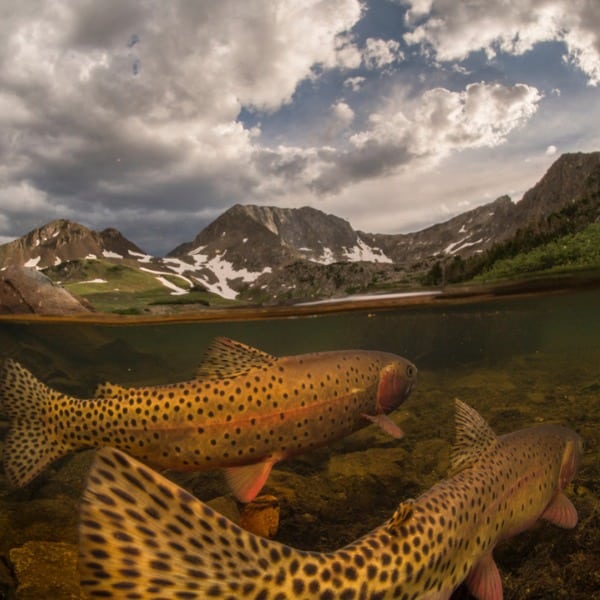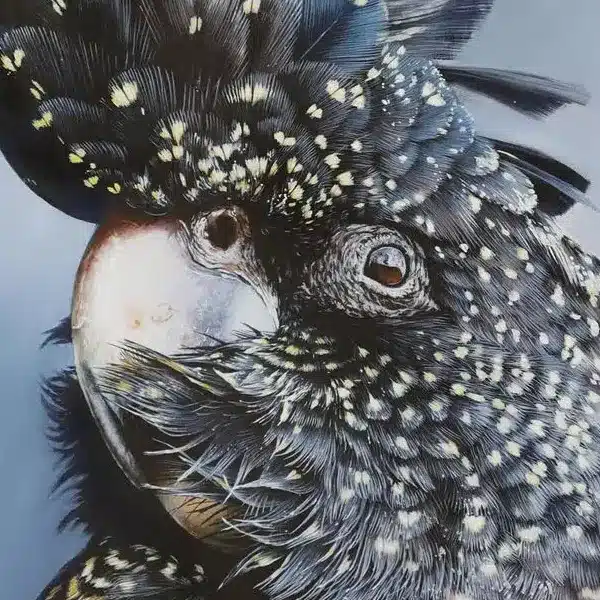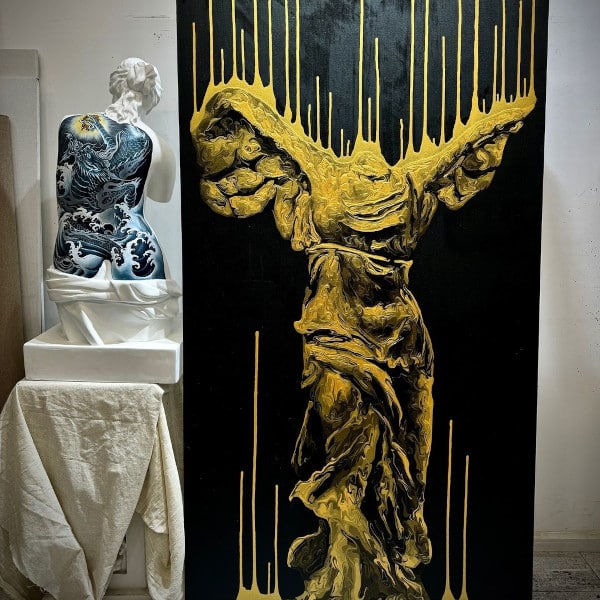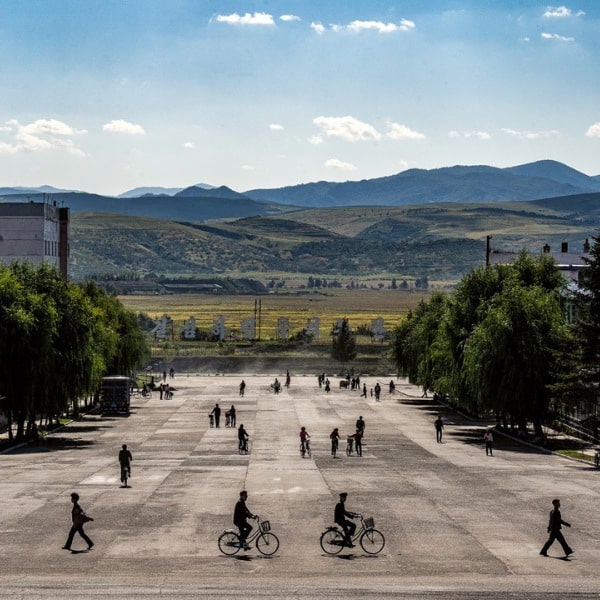![Artist Creates Incredible Paintings from River Pollution [Interview]](https://mymodernmet.com/wp/wp-content/uploads/2020/11/john-sabraw-paint-pollution-river-10.jpg)
Artist, environmentalist, and Ohio University professor John Sabraw has a unique process for sourcing new paint supplies. You are more likely to find him waist-deep in reddish-brown water in southeast Ohio than you are in a traditional craft store. Sabraw found a way to create “toxic” paint from the acid mining drainage that discolors streams. As abandoned mines have drained iron oxide over the course of many years, the environment have become unlivable for aquatic life and less used by humans.
For Sabraw, this isn’t just a creative exercise or science experiment to create colors from an available resource—he and his colleagues want to make a real change to the water. After partnering with Guy Riefler, another instructor at Ohio University, a new project began with the intention of cleaning the water and increasing the production of paint made from the iron oxide. This work had both professors engage with community members, some of whom had experienced the rivers before the pollution became a problem.
Sabraw's dramatic circular paintings began after creating paint in this unique way. Explaining that the team “needed an expressive visual that told the pigments’ story,” he tells My Modern Met, “I began to use the pigment to make circular paintings that express the sublimity of nature, but also the fragility of our relationship with it.” Through his work, Sabraw reveals the potential for art to elevate the work of scientists and environmentalists. His work engages with viewers in a more abstract way, one that allows us to marvel at the colors and consider our effect on the environment. It also encourages us to dive deeper and learn more about the damage humans have inflicted upon our environment and how to undo it.
The “pollution to pigment” effort may have a very bright future. There is no shortage of sites with similar characters and potential applications for the resulting paint to continue to grow. Though the team is excited about continuing work on this scale, the collection and remediation process may be possible on a commercial level—we will just have to keep watching.
My Modern Met had the privilege of interviewing John Sabraw about his work and its environmental importance. Scroll down for our exclusive interview enlightening us about John’s insight on the intersection of science and art and upcoming opportunities to see his work.
![Artist Creates Incredible Paintings from River Pollution [Interview]](https://mymodernmet.com/wp/wp-content/uploads/2020/11/john-sabraw-paint-pollution-river-3.jpg)
How has your art changed since you started creating your own paint in this way?
Our team has worked to make pigments from pollution with quality hue, lightfastness, stability, grind, transparency, and feel. But we also needed an expressive visual that told the pigments’ story. So, I began to use the pigment to make circular paintings that express the sublimity of nature, but also the fragility of our relationship with it. After all, artists' paints throughout history have been made with iron oxides. Our earliest cave paintings were made from red ochre. Most of my paintings use these toxic pigments in combination with standard artist colors.
Everything is intertwined. The streams these pigments come from connect to other streams, rivers, and eventually the ocean. This might seem a local issue but it is not—it is a global issue. One can isolate and examine moments on a micro-scale but if you pull back, you can see that they all connect in a wholly dependent macro system.
That’s what my work is about. I have chosen to examine and explore each of these micro-events to help me to better understand my connection to everything else and what I can do to benefit the whole system. For me, environmentalism and sustainability are intrinsic to our presence within the system of Earth and the universe at large.
![Artist Creates Incredible Paintings from River Pollution [Interview]](https://mymodernmet.com/wp/wp-content/uploads/2020/11/john-sabraw-paint-pollution-river-12.jpg)
Your work demonstrates the benefits of art and science working together. What does this partnership mean to you?
I often get asked: Why would the arts be focused on issues of sustainability and the environment? My answer: Because it’s our job. An artist’s role is to create catalytic experiences, that in turn foster an examination of the key events of our time. This examination in turn may result in actionable realizations.
Artists and scientists share two critical aspects: curiosity and failure. Both are endlessly curious, try new things, and fail often. But that failure does not dampen their curiosity. The artist, like the scientist, has a crucial role to perform in our society—to see things differently, act on this vision, then report the failures and successes.
However, each have different constraints. Where the scientist typically has tightly focused research goals, the artist has few limits and can often see methodologies from a more creative vantage point. But where the artist has broad conceptions, the scientist has a depth of knowledge to implement and is more aware of specific problems that need to be solved. So rather than keeping disciplines and tasks divided, my experience with scientists tells me that artists and scientists should collaborate in a more organic fashion. In some cases, the artist’s role is to break down conventional methods so that science can make leaps. They can also help scientists make information more compelling so that it generates awareness, cultivates support and helps the general population feel that they are a part of scientific progress.
It is, of course, incumbent upon me as the artist to clarify the function of the art in these public pieces. What artists work on is compelling a strong enough response from viewers to encourage thought and dialogue. To do so, the artist creates psychological and emotional impacts, not merely factual or informational; instead, experiential.
How would you advise other artists exploring this relationship?
For anyone who wants to also collaborate in this fashion, my best advice is to go ahead and reach out to someone doing something (art or science) that you find really compelling. Whether a collab emerges or not, each person’s mind will be broadened and you will learn more about how to broach subjects with more people from different backgrounds and disciplines. This will make you a better collaboration partner. People all around the world are actually awesome. Meet as many as you can. From as many places and disciplines and world views as you can fit in. There is nothing more life affirming.
![Artist Creates Incredible Paintings from River Pollution [Interview]](https://mymodernmet.com/wp/wp-content/uploads/2020/11/john-sabraw-paint-pollution-river-7.jpg)
Was there a moment when you saw a significant change in the streams you worked with? Can you describe the impact that moment had on you or your community?
Since 2009, I have partnered with Ohio University civil engineering professor Dr. Guy Riefler and Sunday Creek Watershed Coordinator Michelle Shively to remediate streams impacted by pollution from coal mining, a huge environmental problem in Southeast Ohio and coal extracting locations everywhere. We are refining a process that can continuously treat Acid Mine Drainage (AMD) pollution which primarily consists of iron oxide precipitates, and restore a stream for aquatic life, by transforming the pollution into sustainably sourced iron oxide pigment that can be sold, offsetting operational costs. Based on our best estimates, we should be able to create a few jobs and produce a small profit, while eliminating a perpetual pollution source.
Though the AMD seeps we are working on are too massive to be fixed without our new sustainable technology and process, some smaller streams in the area have been restored through other techniques. Knowing that aquatic life can flourish in these smaller remediated streams spurs us to work ever harder to make this happen for the entirety of Sunday Creek into which the Truetown seep pollution flows. The day our plant starts keeping a million gallons of pollution going into Sunday Creek is the day it starts to recover, and within a matter of months we will see aquatic life return. Many of the surrounding community members remember swimming and fishing in those streams before the pollution started pouring out of the mine in the early 1980s. This project would not be possible without their support. They often tell us how much it would mean to them to see that psychogeography restored.
To that end, we have been working in a new partnership with the Ohio Department of Natural Resources and together, our project was awarded $3.5 million to help build a full-scale treatment plant at Ohio’s worst AMD site in Truetown, Ohio. When built, this facility will treat over a million gallons of pollution a day, and return miles of streams to full health while producing over 5,000 lbs. of sustainably sourced pigment every day for generations to come. What convinced others to provide such funding? Many factors, but a key among them is a partnership I developed with Gamblin Artists Colors which proved our pigments could be a valuable commodity. For several years now, Gamblin has been testing our pigments in their labs to ensure quality and safety. Just this past March, Gamblin released our pigments in a pack of three different colors of oil paint made in their Portland, Oregon factory to retailers around the world, and Gamblin is donating a portion of proceeds to further fund our project. How cool is that?
![Artist Creates Incredible Paintings from River Pollution [Interview]](https://mymodernmet.com/wp/wp-content/uploads/2020/11/john-sabraw-paint-pollution-river-6.jpg)
What do you hope viewers take away from your work?
Via painting and public speaking, I hope to challenge complacency, open minds, and motivate action. I believe art can be an effective method of education and activism. Most of the conflict, injustice, and devastation in the world can be traced back to supply and demand related to the abuse of natural resources. Artists should use whatever is in their power to push for greater responsibility, positive change and sustainability. In addition, collaborating with activists and organizations has the potential to activate those who are apathetic.
Don’t worry about being perfect. Just make one change at a time and it will happen before you know it. For example, linen is far more environmentally friendly than canvas. You can also purchase carbon offset credits from carbonfund.org. Just ballpark it; use estimates for travel, shipping, etc. You’ll be doing something good and you can boast to your clients about it.
The artist is a special kind of consumer and must take responsibility for their consumption, production, and waste. I do my best to analyze my consumption, reduce where possible, offset where it’s not. I hope my art practice encourage others to do the same; and when they find ways to have a more sustainable practice, share that information with me and others. We are all in this together.
![Artist Creates Incredible Paintings from River Pollution [Interview]](https://mymodernmet.com/wp/wp-content/uploads/2020/11/john-sabraw-paint-pollution-river-11.jpg)
Are you working on any new projects? Anything you can share with us?
The show Catastophic Beauty recently opened at Qualia Contemporary Art [in Palo Alto, CA] and I am honored to have exhibited with six other environmentally and socially focused artists.
Also, if the next phase of our pollution to pigment project goes well, there is potential to expand it significantly. The 1,000-gallons-per-minute flowing into Sunday Creek from Truetown is from a single discharge site, but there are plenty of others. And the pigments produced at the facility can be used not only for paint, but also in products including concrete, bricks, industrial coatings, agricultural fertilizer, and cosmetics. Maybe in a few years our process can be cleaning up pollution all over the world!
One other project that is in the making is a new collaboration with Ohio University associate professor of Japanese Language and Culture Chris Thompson, who I teamed up with for a global engagement opportunity through art, uniting students and faculty from OHIO and two partner institutions in Japan. Together we are creating paints from silt deposited by the 2011 tsunami in Iwate and Aichi prefectures. Japanese students will join us to collaborate with our Ohio students to create a public mural honoring the relationship of our connected psycho-geographies, through visualizing human stories from each region. In addition to an essay collection and small traveling art exhibition, the plan is to create an inspirational mural on a 48-foot seawall protecting Tarō, Japan, a city in the Iwate Prefecture devastated by a 2011 tsunami that claimed more than 15,000 lives.
You can go see more of Sabraw's work at:
McCormick Gallery. Chicago, IL
Sargent Gallery. Martha’s Vineyard, MA
![Artist Creates Incredible Paintings from River Pollution [Interview]](https://mymodernmet.com/wp/wp-content/uploads/2020/11/john-sabraw-paint-pollution-river-4.jpg)











































































